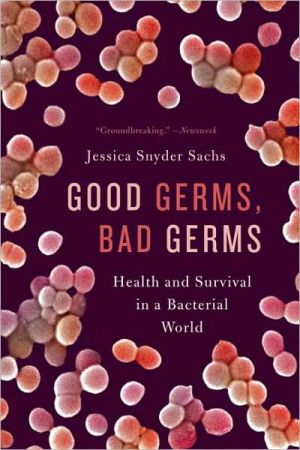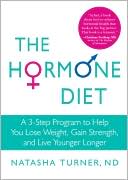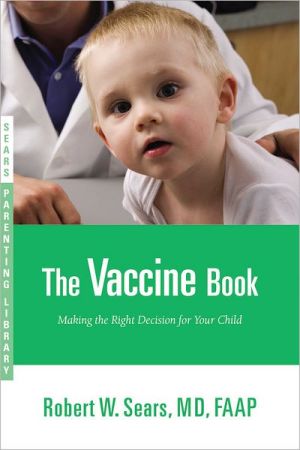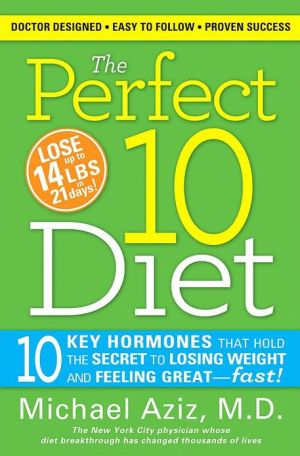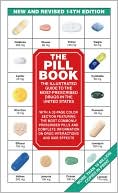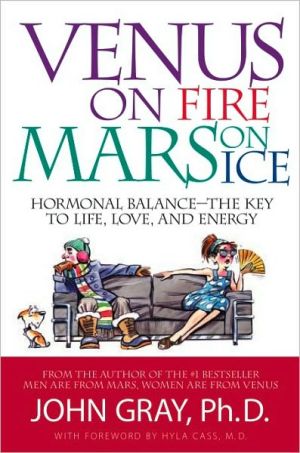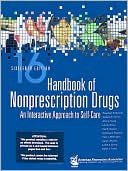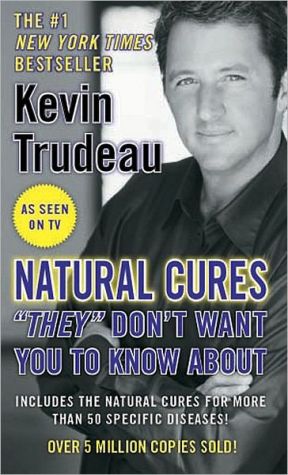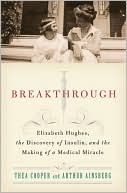Good Germs, Bad Germs: Health and Survival in a Bacterial World
Public sanitation and antibiotic drugs have brought about historic increases in the human life span; they have also unintentionally produced new health crises by disrupting the intimate, age-old balance between humans and the microorganisms that inhabit our bodies and our environment. As a result, antibiotic resistance now ranks among the gravest medical problems of modern times. Good Germs, Bad Germs tells the story of what went terribly wrong in our war on germs. It also offers a hopeful...
Search in google:
Making Peace with MicrobesPublic sanitation and antibiotic drugs have brought about historic increases in the human life span; they have also unintentionally produced new health crises by disrupting the intimate, age-old balance between humans and the microorganisms that inhabit our bodies and our environment. As a result, antibiotic resistance now ranks among the gravest medical problems of modern times. Good Germs, Bad Germs addresses not only this issue but also what has become known as the "hygiene hypothesis"— an argument that links the over-sanitation of modern life to now-epidemic increases in immune and other disorders. In telling the story of what went terribly wrong in our war on germs, Jessica Snyder Sachs explores our emerging understanding of the symbiotic relationship between the human body and its resident microbes—which outnumber its human cells by a factor of nine to one! The book also offers a hopeful look into a future in which antibiotics will be designed and used more wisely, and beyond that, to a day when we may replace antibacterial drugs and cleansers with bacterial ones—each custom-designed for maximum health benefits. The Barnes & Noble Review Twin horror stories lead off this slender but vastly informative examination of bacteria and their intimate, complex role in our lives. One is an account of a high school football star stricken by a drug-resistant infection; the second describes a child whose food allergies threaten his life. Jessica Snyder Sachs tells their tales movingly but swiftly leaves them behind for her real subject: how our modern "war on germs" may have given rise to both their conditions. What follows is a Fantastic Voyage through the human body and the world of its millions of microbial denizens. It's a journey that sheds light on why, for all the scientific advances in hygiene and antibiotics, developed countries continue to face new and more daunting challenges in the form of "superbugs" and out-of-control allergies. Sachs isn't afraid of a little lab-speak, and Good Germs, Bad Germs will often make you wish you'd paid more attention in Bio 101. But the author has a knack for giving dramatic form to the many organisms that take the stage here. As she demonstrates how microbes swap genes, send out radar-like detection molecules and brilliantly adapt to the strategies we use against them, we watch their astonishing feats as if in a brilliantly animated film. The result is an important -- and eye-opening -- inquiry into human-microbe coevolution. --Bill Tipper
Good Germs, Bad Germs\ Health and Survival in a Bacterial World \ \ By Sachs, Jessica Snyder \ Hill and Wang\ Copyright © 2007 Sachs, Jessica Snyder\ All right reserved.\ ISBN: 9780809050635 \ \ \ Excerpt\ On the icy afternoon of December 6, 2003, Theresa Lannetti slipped into the home-team bleachers of Person Stadium, in the wooded college town of Williamsport, Pennsylvania. Like everyone around her, she had come to cheer the Lycoming College Warriors in their NCAA division quarterfinals against the Bridgewater Eagles. But for once Theresa did not scan the crowd for the other parents with whom she’d become friends over the previous three years. She understood that few would expect her to be there, and some might feel awkward that she was.\ The previous night, in the critical-care unit of a local community hospital, Theresa had wrapped her arms around her son’s college roommate, Sean Hennigar, telling him that he would score a touchdown for Ricky the next day. In the morning Theresa knew that she had to stay in Williamsport and lose herself in the familiar sounds of the game. She watched as Ricky’s teammates jogged out from the locker room; she registered the clenched jaws and fists of his best friends; and then she glimpsed the 19s scrawled in eye black across their arms, sleeves, and pant legs. The cheerleaders rose to welcome the team—more 19s, written in jagged strips ofathletic tape across the backs of their jackets and with blue greasepaint on puffy cheeks streaked with tears. Theresa’s own eyes remained dry until she looked across the field to see yet another 19, some fifteen feet tall, shoveled into the snowy hillside alongside the visitor stands. As Theresa watched, the artist put down his shovel and flopped onto his back, adding one perfect snow angel and then another—two asterisks above her son’s number. Perhaps they stood for the two team records that Ricky Lannetti had set that season: six pass receptions in a single game and seventy over the regular season. Overhead, the clouds began to part for the first time that week.\ The first snowstorm of the winter had arrived the previous Tuesday, dusting the field as the Warriors finished afternoon practice. The forecast of weeklong blizzard conditions did not dampen the campus-wide excitement over the NCAA division quarterfinals, with expectations high that this would be the season Lycoming would advance to the semifinals, having fallen short the previous six years. Ricky had started coughing that morning, and near the end of the blustery cold practice, a wave of nausea forced him to sit out the final plays. When Theresa called from Philadelphia the next day, Ricky cut her short. “Mom, I can’t talk right now. I don’t feel so good,” he said. “I’ll be fine. It’s just one of those twenty-four-hour things. I gotta throw up now, okay?”\ Theresa told herself that Ricky was probably right—he’d be fine by the weekend. As always, she looked forward to watching her son play and didn’t even mind the 180-mile trip from her row-house neighborhood in northeast Philly to Williamsport, the central Pennsylvania college town where Ricky was halfway through his senior year as a criminal justice major. While Theresa’s marriage to Ricky’s father had ended in 1991, their son’s sports, especially football, kept family and mutual friends bound together around practice schedules, games, and postgame celebrations. In grade school Ricky had a reputation as a “mighty mite,” always among the smallest on the field but also the hardest to catch or evade. Other kids his age could never understand how a guy who barely reached their shoulders could hit so damn hard or arc into the air, as if from nowhere, to snag a ball. By the time Ricky reached high school, Theresa was cheering more often than cringing when her son withstood tackles that should have brought down someone twice his size. She even begrudgingly accepted the fact that there was no way she could drag him out of a game, even when she knew he’d been hurt. In his four years playing for Lycoming, he had missed only one game, and that for a badly twisted ankle that he insisted was fine after a week.\ But the days leading up to the team’s quarterfinal game had Theresa worried. Ricky was still throwing up when she called back on Thursday. “You can’t ignore this!” she insisted. “You have to have someone check this out.” She phoned the head trainer, Frank Neu, who promised to take Ricky to see his wife, a family physician, to rule out anything more serious than the flu that had been downing students since the Thanksgiving break. That afternoon Stacey Neu listened to Ricky’s lungs. They sounded clear. She took his temperature—slightly elevated. With his main symptoms being nausea, fatigue, and achiness, all signs pointed to the flu. Antibiotics wouldn’t help, she explained, as they kill bacteria, not viruses.\ The snow was still falling across Pennsylvania on Friday morning when Ricky’s legs began to ache. His roommates, Sean Hennigar and Brian Conners, pushed sports drinks and water, figuring that Ricky was dehydrated from vomiting. That evening the snow slowed Theresa’s drive out of Philly to a crawl. She wasn’t yet halfway to Williamsport at 9:30 p.m. when Ricky called her cell phone to say he wanted to sleep. He’d see her in the morning. But Ricky didn’t sleep. And despite himself, he moaned every time he rolled over in bed. “If I don’t get outta here, you guys won’t get any sleep before the game,” he told his roommates at 4:00 a.m. He called and asked his mom to bring him to her hotel room.\ Initially, Ricky rebuffed Theresa’s suggestion that they go to the hospital. But when she heard him sound short of breath, she insisted. At 7:20 a.m. they pushed through the emergency room doors, and Ricky began vomiting blood. Within five minutes a half dozen doctors and nurses had oxygen flowing into Ricky’s nostrils and an intravenous line infusing fluids into his left arm. They drew blood for laboratory tests and put him on a heart monitor.\ The critical-care doctor in charge noted Ricky’s rapid heart rate, low blood pressure, shortness of breath, and slightly elevated temperature. “Just achy all over,” Ricky told him when the doctor asked about chest or abdominal pain. “And tired, really tired.” Ricky’s lungs still sounded clear. His nose and throat looked normal. The doctor asked when he last peed. “Sometime Thursday, I think,” Ricky replied. Theresa saw the alarm in the face of the doctor, who immediately called for a catheter. As soon as the nurse inserted it, the attached Foley bag filled with cloudy brown urine. Ricky’s kidneys were shutting down.\ Though Ricky’s symptoms still pointed to a viral illness—albeit an overwhelming one—the critical-care doctor decided that he could not afford to wait for the twelve-hour blood culture that could rule out a bacterial infection. He added two powerful antibiotics—cefepime and vancomycin—to the fluids flowing into Ricky’s arm. Theresa, meanwhile, had reached Ricky’s father en route to Williamsport for the afternoon game and diverted him to the hospital. When Rick Senior arrived just before 11:00 a.m., he was stunned by the sight of his son in a tangle of tubes and wires, lips and nose still flecked with dry blood.\ Back at Lycoming College, NCAA officials were trodding over the snow-blanketed playing turf and kicking at the broad mound of ice that encased midfield. At 10:00 a.m. they had announced their decision to postpone the game to Sunday rather than risk player injury. Ricky’s closest teammates headed to the hospital, where to their surprise the emergency room staff let them walk into the intensive care unit. Ricky seemed better. Irritated with the parade of doctors in and out of his room, he wanted the oxygen line removed from his nose, and he wanted to know when he could go home. “I heard the game was postponed,” he told Sean. “That’s great. Maybe I’ll have a chance to play.”\ But just after 1:00 p.m. Ricky sank into unconsciousness, and alarms began beeping as the level of oxygen in his blood dropped dangerously low. A nurse herded the football players out of the room, as doctors snaked a tube down Ricky’s throat so a mechanical ventilator could take over the work of his failing lungs. An echocardiogram showed that his heart was likewise weakening, and a call went out for a helicopter to fly Ricky to Philadelphia’s Temple University Medical Center, where he could be put on a heart-assist machine. An infectious-disease specialist ordered additional antibiotics as a hedge against any conceivable type of bacterial infection. Something was destroying Ricky’s organs, but exactly what or where it lurked in his body remained maddeningly unclear. Then came worse news: the helicopter pilot at Temple University Hospital had ruled it too dangerous to fly in the continuing snowstorm.\ Ricky’s heart stopped at 5:36 p.m. For forty minutes, nurses and doctors performed CPR as they waited for a cardiac surgeon to arrive. By 6:30, the surgeon had connected Ricky’s arteries to a heart-lung bypass machine that circulated sixteen units of oxygenated blood through his body. But an hour later Ricky’s heart remained still, his eyes fixed and dilated. The surgeon stepped out of the operating room to talk with Ricky’s parents. At 7:36 p.m. he disconnected Ricky’s machine.\ Theresa asked the nurses to help her clean Ricky and move him back to his hospital room. She wanted the boys—now sobbing in the hallways—to see their friend once more before they left. She knew she had done the right thing when Ricky’s father pointed out the smile on his son’s face and linebacker Tim Schmidt added, “Damn, if that’s not that smirk he gets when he’s just pulled something over on us.”\ A few minutes later Ricky’s parents learned the name of his killer. The blood culture the doctors had ordered that morning came back positive for methicillin-resistant Staphylococcus aureus, MRSA, a bug that could shrug off not only the methicillin family of antibiotics but also a half dozen others. Worse, this particular strain of MRSA—now known to specialists as USA300—also carried genes for an array of toxins, some of which triggered the deadly internal storm known as septic shock, with its signature symptoms of plummeting blood pressure, massive blood clotting, and organ failure.\ The morning after Ricky’s death, a muffled quiet saturated the Lycoming locker room even as the team began to gather for the coming game. Several exhausted players had been at the hospital through the night. But all agreed that Ricky would have been “royally pissed” if they did not play. As Ricky’s devastated father let a family friend drive him home, Theresa took her seat in the stands. The game began fitfully, as the Warriors struggled with plays that had been designed around their star receiver. Early in the first quarter, quarterback Phil Mann hesitated in the huddle before calling, “Club right.” The play had always meant Ricky, running like hell out of the offensive backfield in a narrow crossing pattern. This time it would be Sean, sprinting from behind the thirteen-yard line. When Sean turned, Mann’s missile smacked hard into his hands. He bulldozed the last three yards to the touchdown. It would be the only score for Lycoming in its losing bid for the semifinals that day. But for that moment, high in the stands, Theresa found herself screaming with the crowd, shaking and crying as, out on the field, Sean Hennigar lifted the football high toward a now-blue sky. \ Daniel’s Story\ At age seven, Daniel tries to shrug it off. But it’s kinda scary when classmates brag they’re “gonna get him” with their peanut butter sandwiches. “It horrifies me,” says his mother, Ann, a New York City radio producer.1 “How can they remotely think this funny?” She remembers the November evening, five years ago, when she almost lost her beautiful dimple-cheeked boy. It began innocuously enough. Ann had just stepped onto the sidewalk in front of her Manhattan office and pulled out her cell phone to let the babysitter know she was running a little late. Daniel had just thrown up after eating an almond-butter sandwich, the sitter reported. “Okay, these things happen,” Ann reassured her. “Just keep an eye on him.” When Ann called from Penn Station fifteen minutes later, Daniel had diarrhea. When she called a third time from the train out of New York City, Daniel was struggling for breath. “I’m giving him his asthma nebulizer,” the babysitter said. “Call nine-one-one. Right now,” Ann insisted.\ When Daniel’s mother next saw him, on a gurney emerging from an ambulance at their local New Jersey hospital, large red welts covered his face. The paramedics had found Daniel in anaphylactic shock, his throat swelling shut and his blood pressure plummeting toward zero. They brought him back with injections of the powerful stimulant epinephrine and an inflammation-stopping steroid. That’s when Daniel’s parents learned that he had life-threatening food allergies—most severely to peanuts, a trace amount of which had likely cross-contaminated the almond butter he’d eaten.\ “Looking back, he probably had allergies long before we realized,” Ann says. When Daniel was two months old, he developed severe eczema, an allergic skin condition that left his cheeks pink and scaly and the inside of his elbows and backs of his knees raw and oozing. Shortly after Daniel’s first birthday, he developed asthma, yet another condition often triggered by allergies, in this case to respiratory allergens such as dust mites and dander. By his second birthday fresh blood was appearing in his stools. It was just a little at first, and the pediatrician told Ann not to worry. Children often bled a little from a small fissure, or irritated crack, inside the rectum.\ But over the next three years, not only did Daniel’s allergies become obvious and life-threatening, the bleeding worsened, until he was passing more than twenty bloody stools a day with horrific cramping. A colonoscopy revealed open sores the length of Daniel’s large intestine. He had ulcerative colitis, an inflammatory disorder in which the immune system mistakes either food or the intestine’s normal resident bacteria for foreign invaders deserving a full-bore attack. At the start of second grade Daniel spent three weeks in the hospital on powerful anti-inflammatory drugs and went home with a long-term prescription for sulfa drugs to keep the inflammation from returning. But within a year, Daniel developed the telltale rashes that indicated he was becoming allergic to his medications. In the fall of 2006 his colitis returned, putting him at risk for a perforation of the colon—a condition as potentially deadly as a burst appendix.\ “No child should have to go through this,” says Ann. “Our challenge has been trying to figure out how to protect him while letting him live a normal life.” Ann has had to decide, for example, whether to allow Daniel to eat lunch in the school cafeteria, his allergies being so severe that contact with something as small as a peanut crumb could trigger anaphylaxis. The compromise: her son sits at the end of a lunch table next to his best friend, whose mother knows not to pack peanut butter or anything else on Daniel’s list of forbidden foods.\ Not that Daniel is alone. “There are five kids in his grade who have EpiPens,” says Ann of the prefilled prescription syringes that contain enough epinephrine to reverse a life-threatening allergic reaction. Daniel never leaves the house without two of them strapped to his waist in a special belt. Daniel’s eczema, asthma, and respiratory allergies are even more commonplace among his classmates, says his school nurse. In all, she estimates that 40 percent of her students have some type of serious allergic disorder. “We’re not talking about a little sneezing in hay fever season,” she says. “These kids are sick. Many can’t go outside for recess or field trips.” After thirty years as a nurse, she has also been taken aback by a recent increase in inflammatory bowel disorders in her students—not only Daniel’s ulcerative colitis, but even more commonly, Crohn’s disease and irritable bowel syndrome, problems she’d never before seen in children. Excerpted from Good Germs, Bad Germs by Jessica Snyder Sachs. Copyright © 2007 by Jessica Snyder Sachs. Published in October 2007 by Hill and Wang, a division of Farrar, Straus and Giroux, LLC. All rights reserved. \ \ Continues... \ \ \ \ Excerpted from Good Germs, Bad Germs by Sachs, Jessica Snyder Copyright © 2007 by Sachs, Jessica Snyder. Excerpted by permission.\ All rights reserved. No part of this excerpt may be reproduced or reprinted without permission in writing from the publisher.\ Excerpts are provided by Dial-A-Book Inc. solely for the personal use of visitors to this web site. \ \
Seven Key Terms and Conventions ixPrologue: A Good War Gone BadRicky's Story 3Daniel's Story 7Revenge of the Microbes? 9The War on GermsFrom Miasmas to Microbes 15Germ Theory Reborn 20The Sanitarians 26The Search for Magic Bullets 29Life on ManThe Body as Ecosystem 35Into the Mouths of Babes 37Life on the Surface 41Life on the Inside 44Bugs in Space 45Where No Biologist Has Gone Before 49The Inner Tube of Life 52Who's the Boss? 59A New Window Opens 64Stealth Infections or Innocent Bystanders? 67Too Clean?Hair Trigger 73From Hippocrates to the Hygiene Hypothesis 76A History of Self-Destruction 81Children in the Cowshed 83Teaching Tolerance 87Innate Immunity 89The Dirt Vaccine 91Old Friends 97Beyond Immunity 101Bugs on DrugsA Killer in the Nursery 105An End toBacterial Disease? 109Microscopic Mating Games 111The Bacterial Superorganism 115Danger Ignored 116Old Habits, New Insights 120Out of the Hospital and into Our Daily Lives 125The Reservoir Within 131Resistance by the Shovel 136Down on the Farm 141The Antibiotic Paradox 148Fighting Smarter, Not HarderThe Good Old Days? 151Preserving Antibiotics: Less Is More 154Homing In on the Enemy 158Drugs with On-Off Switches 163Silencing Resistance 165Farming Out Resistance 168Beyond Antibiotics: New Ways to Kill 170Cocoons and Frog Slime 176Beyond Lethal Force - Defang, Deflect, and DeployDrugs That Disarm 185Vaccines - Forewarned Is Forearmed 189Domesticate and Deploy 193Prescription Probiotics 196Fighting Fire with Fire 199A Superhero for the Mouth 203Transgenic Probiotics 205Probiotics for Livestock 212A Second Neolithic Revolution 214Fixing the PatientThe Dragon Within 219Enhancing the Bionic Human 225From Sepsis to Chronic Inflammation 228Immunobug Immunodrugs 232Tweaking the Bug 233Into the Future 234Coda: Embracing the Microbiome 235Notes 239Further Reading 273Acknowledgments 275Index 277
\ Publishers WeeklyScience writer Sachs (Corpse) makes a strong case for a new paradigm for dealing with the microbial life that teems around and within us. Taking both evolutionary and ecological approaches, she explains why antibiotics work so well but are now losing their effectiveness. She notes that between agricultural antibiotic usage and needless prescriptions written for human use, antibiotic resistance has reached terrifying levels. A decade ago, resistant infections acquired in hospitals "were killing an estimated eighty-eight thousand Americans each year... more than car accidents and homicides combined." Our attempts to destroy microorganisms regularly upset useful microbial communities, often leading to serious medical consequences. Sachs also presents evidence suggesting that an epidemiclike rise in autoimmune diseases and allergies may be attributable to our misguided frontal assault on the bacterial world. The solution proposed is to encourage the growth of healthy, displacement-resistant microbial ecological communities and promote research that disrupts microbial processes rather than simply attempting to kill the germs themselves. Despite the frightening death toll, Sachs's summary of promising new avenues of research offers hope. (Oct. 16)\ Copyright 2007 Reed Business Information\ \ \ \ \ Library JournalThe human body, science writer Sachs (Corpse: Nature, Forensics, and the Struggle To Pinpoint Time of Death) makes clear, hosts a teeming ecosystem of microorganisms, which, like a terrestrial ecosystem, owes its survival to the balanced interrelationships of its inhabitants. The ecosystem of Homo sapienshas evolved over millennia to optimize our species' healthy development. Sachs reports, however, that scientists increasingly suspect that 19th-century advances in sanitation and the 20th-century advent of antibiotics have inadvertently disrupted these ancient symbioses. Increasingly, allergies, autoimmune diseases, and widespread drug-resistant bacteria are the unintended consequences of the modern world's dramatic medical progress. Fortunately, Sachs softens her bad news with stories of promising research, including new vaccines that may prevent diseases requiring antibiotic treatment, "probiotic" cultures that restore internal microflora balance, and, more controversially, genetic manipulation of bacteria to improve the virus-fighting qualities of friendly bacteria or to hinder the reproduction of those causing disease. The paradigm shift of working with instead of against bacteria has the potential to revolutionize 21st-century medicine; Sachs's book is a thoughtful lay reader's guide to this emerging field. Recommended for most libraries.\ —Kathy Arsenault\ \ \ \ Kirkus ReviewsChapter and verse on the bugs that outnumber, outwit and no doubt will outlast us. The good news is that for the most part these bugs, aka bacteria, help or at least do no harm. With us since birth, the resident flora help digest and extract nourishment from what we eat, asking little but leftovers in return. Comfortably lodged in our various niches, they also impede hostile takeovers by the not-so-nice species, which is one reason we suffer diarrhea or other complaints. Sachs (Corpse: Nature, Forensics, and the Struggle to Pinpoint Time of Death, 2001) deals with the well-known problems of human antibiotic abuse that leads to scary headlines about hospital superbugs or extensively drug-resistant tuberculosis, but she also covers the overuse of antibiotics for livestock, which ensures that at least some highly drug-resistant bugs make it to the supermarket. She explains the many ways bacteria acquire resistance: via mutations, but also through the exchange of genes within a strain (bacterial sex) and across species; genes are also ferried into bacteria by invading viruses. Sachs points out that most antibiotics are derived from bacteria species that have a supply of resistance genes sequestered in their main chromosome ready to be turned on to prevent bacterial suicide. Humans' built-in defenses are largely the components of the immune system, the antibody-producing and killer cells, as well as the ones that trigger allergic sneezes. The latter branch of the system may be in overdrive, she suggests, as we excessively spritz the latest bactericidal sprays and cleaners. This "hygiene hypothesis" posits that the reason for increases in asthma, allergies and autoimmune diseases in thedeveloped world is that the immune system, for want of normal disease-fighting activity, overreacts to any stray molecule it senses, triggering an inflammatory response. Sachs discusses a variety of proposed solutions for infection as well as allergy, but basically the message is, "Get over it! Learn to live and let live in a natural balance."\ \ \ \ \ The Barnes & Noble ReviewTwin horror stories lead off this slender but vastly informative examination of bacteria and their intimate, complex role in our lives. One is an account of a high school football star stricken by a drug-resistant infection; the second describes a child whose food allergies threaten his life. Jessica Snyder Sachs tells their tales movingly but swiftly leaves them behind for her real subject: how our modern "war on germs" may have given rise to both their conditions. What follows is a Fantastic Voyage through the human body and the world of its millions of microbial denizens. It's a journey that sheds light on why, for all the scientific advances in hygiene and antibiotics, developed countries continue to face new and more daunting challenges in the form of "superbugs" and out-of-control allergies. Sachs isn't afraid of a little lab-speak, and Good Germs, Bad Germs will often make you wish you'd paid more attention in Bio 101. But the author has a knack for giving dramatic form to the many organisms that take the stage here. As she demonstrates how microbes swap genes, send out radar-like detection molecules and brilliantly adapt to the strategies we use against them, we watch their astonishing feats as if in a brilliantly animated film. The result is an important -- and eye-opening -- inquiry into human-microbe coevolution. --Bill Tipper\ \
